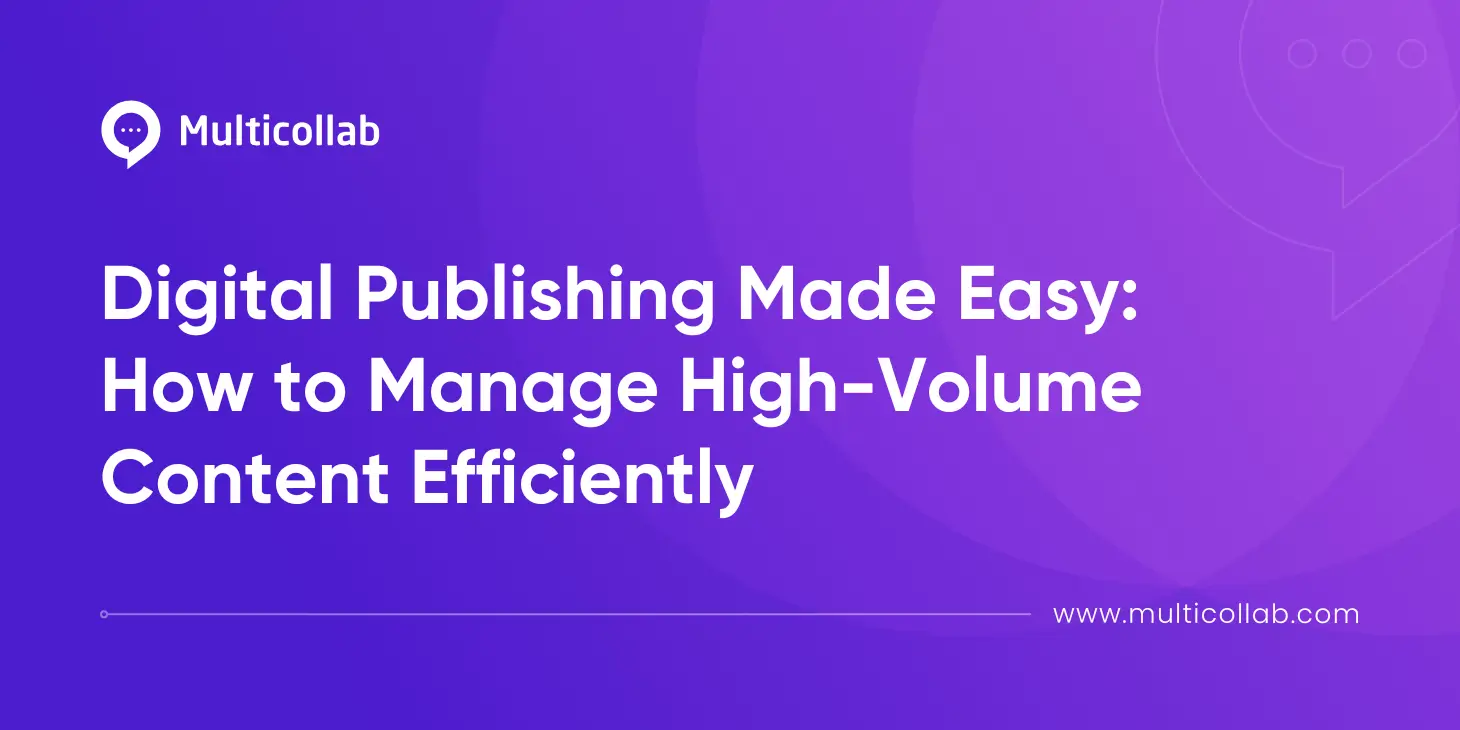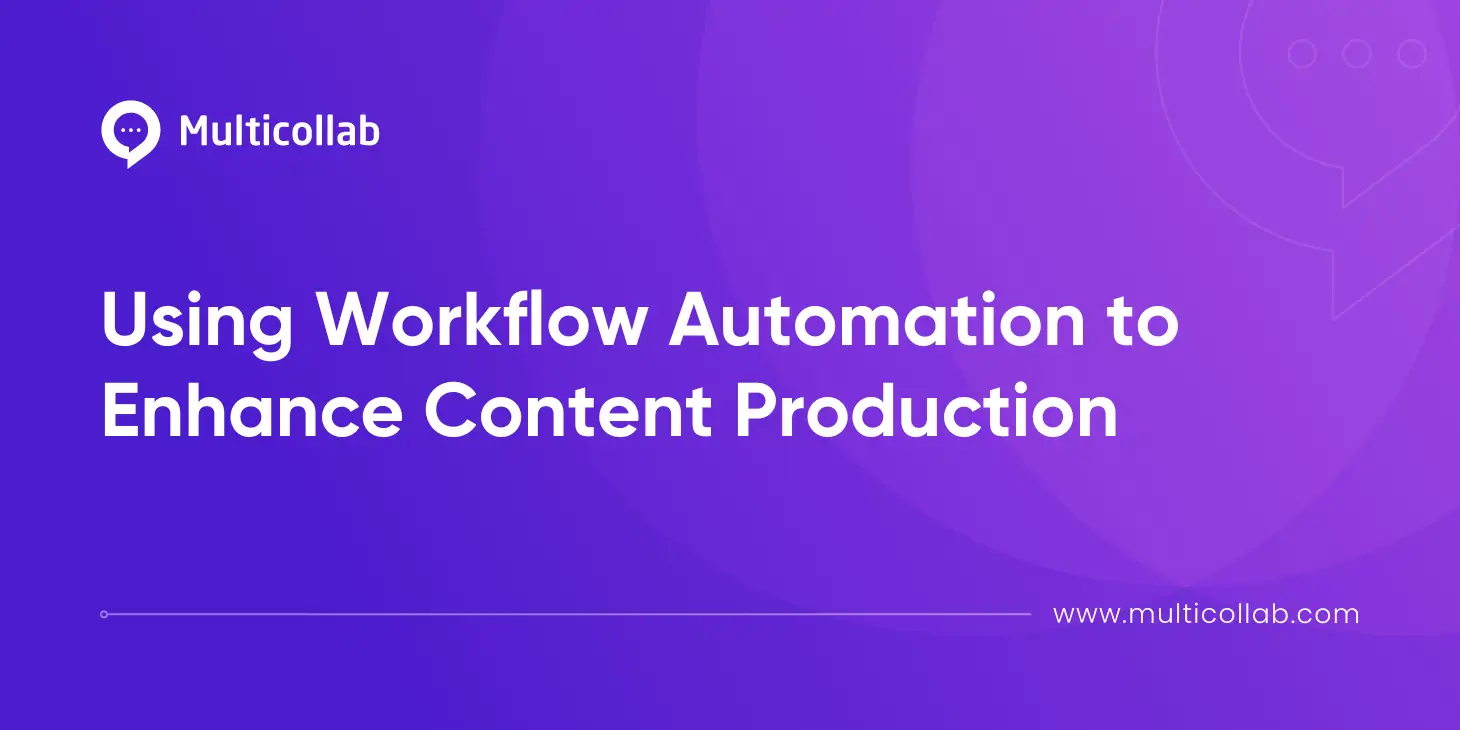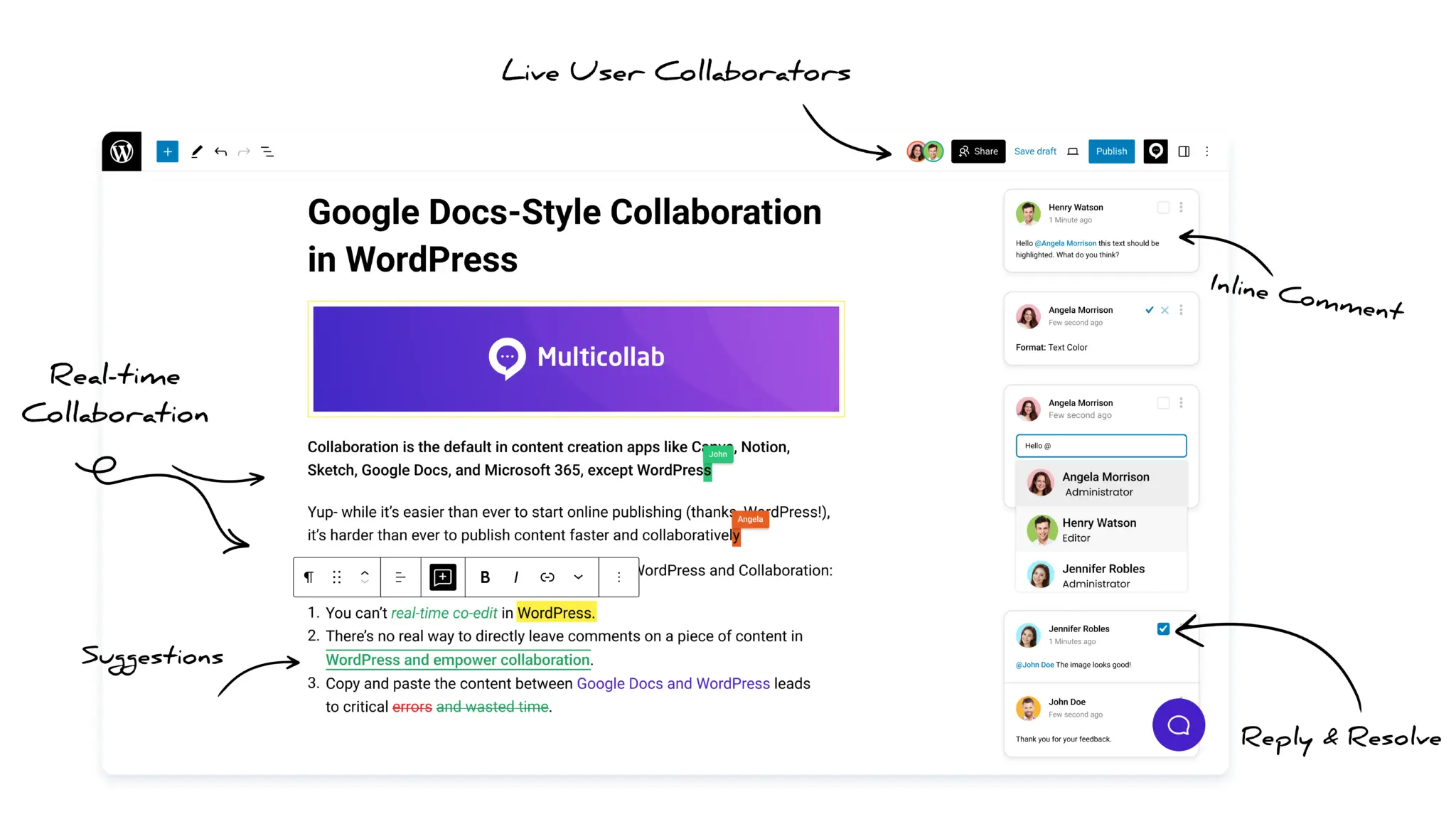Table of Contents
As teams grow and content volumes increase, the process of digital publishing becomes harder to manage.
If you’re using WordPress, you probably know that drafts live in one place, feedback comes from somewhere else, and deadlines slip. And it’s easy to lose track of who’s doing what. That’s where a better digital publishing workflow can make all the difference.
In this guide, we’ll break down why WordPress teams struggle with high-volume content, and how you can simplify the process to improve team collaboration and reduce delays in your publishing efforts. Lets get started.
What is digital publishing?
Digital publishing is the process of creating and sharing content online. This can include blog posts, news articles, whitepapers, landing pages, product updates, and more.
For small teams, it might just mean writing a blog post and uploading it to WordPress. But for growing companies, media publishers, or content-heavy websites, this becomes a structured process of online publishing. Multiple people are involved. Deadlines matter. And content needs to be accurate, well-formatted, and optimized for search.
At its core, digital publishing is about getting content online and doing it consistently, efficiently, and in a way that supports your business goals like traffic, engagement, or conversions.
Why scaling digital publishing in WordPress gets difficult
WordPress is one of the most popular platforms for publishing content online. It’s flexible, open-source, and works well for blogs, magazines, product updates, and more. But once your content volume grows, WordPress alone often isn’t enough.
Here’s why publishing at scale starts to feel messy:
Content lives in too many places
Writers draft in Google Docs. Editors leave comments in Slack. Briefs sit in Trello. And then everything has to be moved manually into WordPress. The more content you create, the more time you lose just trying to stay organized.
Feedback and approvals slow things down
There’s no built-in system in WordPress for approving content or tracking changes. Editors often go back and forth on email or ping writers with edits in separate files. This leads to version confusion and missed deadlines.
Repetitive tasks eat up your team’s time
Every blog post needs formatting, internal linking, featured images, meta descriptions, and scheduling. Doing this manually, post after post, takes up hours every week, especially when your team is managing dozens of pieces a month.
It’s hard to know what’s working
Most WordPress teams use external tools to track performance like Google Analytics, social metrics, or SEO scores. But these aren’t tied into the publishing process. So content gets pushed live without clear insights on whether it supports traffic or business goals.
Plugins help, but they don’t always work together
You can add features to WordPress using plugins. But if your team relies on too many of them to fill basic publishing gaps, things break. It’s easy to end up with overlapping tools, slow site speed, or conflicts that create more problems than they solve.
Common pain points in digital publishing teams
When you’re publishing at scale, it’s not just about the content. It’s about the people, the process, and the tools that hold it all together. And when even one part breaks, the whole system slows down.
Here are the most common pain points digital publishing teams face, especially when using WordPress.
Teams work in silos
Writers, editors, marketers, and designers often work in different tools with little visibility into what others are doing. That makes it hard to stay aligned, especially when content moves fast.
Version control is a mess
Without a shared editing space, people work on different drafts and leave comments in different places. This leads to confusion about which version is final and causes unnecessary rework.
Approvals are unclear or delayed
Most WordPress sites don’t have a built-in way to request feedback or mark content as approved. Teams rely on emails or Slack messages, which get missed or buried in other conversations.
Publishing is repetitive and manual
Processes like formatting content, optimizing for SEO, adding links and images are often done by hand. When you’re publishing 20, 50, or 100 pieces a month, that adds up.
Deadlines slip without visibility
It’s easy to miss deadlines when no one can see the full picture. Without a shared editorial calendar or status labels, content gets stuck in review or forgotten altogether.

Performance isn’t connected to the workflow
Writers and editors rarely see how content performs after it’s published. There’s no direct link between publishing tools and performance data, so what’s working (and what’s not) often goes unnoticed.
Onboarding new contributors takes too long
Freelancers, guest writers, or new hires often struggle to understand how your team works. Without clear systems or documentation, training slows down production.
These challenges don’t just slow things down, they lead to burnout, missed opportunities, and content that doesn’t perform as well as it could.
Who’s involved in digital publishing (and what each role struggles with)
Digital publishing is a team effort, with each role depending on the next to keep things moving. But when the workflow breaks, every team member feels it in a different way.
Here’s a closer look at the key people involved in publishing and what usually slows them down.
1. Writers
What they do: Create content based on briefs and brand guidelines.
What they struggle with:
- Switching between Google Docs and WordPress
- Formatting that breaks during copy-paste
- Receiving scattered feedback across emails and Slack
2. Editors
What they do: Review content, give feedback, and make sure posts are ready to publish.
What they struggle with:
- No clear version history or in-line comments inside WordPress
- Delays waiting on revisions
- No built-in approval system to keep track of what’s ready
3. Project managers / content leads
What they do: Assign tasks, set deadlines, and keep production on track.
What they struggle with:
- No central calendar or dashboard to track progress
- Constant follow-ups for updates
- Hard to spot bottlenecks early
4. SEO specialists
What they do: Optimize posts for search and track performance after publishing.
What they struggle with:
- SEO is often treated as an afterthought
- No way to check optimization until the post is live
- Lack of visibility into content before it’s published
5. Designers / brand team
What they do: Create graphics, choose visuals, and ensure brand consistency.
What they struggle with:
- Getting looped in too late in the process
- Manually uploading or embedding images
- No access to content drafts for context
Each of these roles plays a vital part in publishing. But without a shared system, the process becomes disjointed. The result? Frustration, delays, and content that doesn’t meet its full potential.
What an ideal digital publishing workflow looks like in WordPress
A strong publishing workflow makes everything easier. It keeps content moving, reduces back-and-forth, and helps everyone stay on the same page – literally.
Here’s what an ideal digital publishing workflow inside WordPress should look like from start to finish:
Step 1: Create the brief
- Start with a clear content brief. It should include the topic, target audience, keywords, word count, and goals.
- Assign the brief to a writer directly inside your editorial calendar or content planning tool.
Step 2: Draft the content inside WordPress
Skip the Google Docs back-and-forth. Write directly in the WordPress editor. This keeps everything in one place and avoids formatting issues later.
Step 3: Collaborate with comments and suggestions
Instead of emailing feedback, use a plugin like Multicollab to add comments, suggest edits, and tag teammates, in real-time and all without leaving WordPress. Everyone can see updates in real time.
Step 4: Get approvals
- Once edits are done, the content moves to the approval stage.
- Use status labels like “Needs Review,” “Approved,” or “Final Edits” so it’s clear where each piece stands.
Step 5: Optimize for SEO and formatting
Before publishing, check for meta descriptions, internal links, featured images, and SEO keywords. Use tools like Yoast SEO or Rank Math to catch issues early.
Step 6: Schedule the post
Once everything looks good, schedule the post to go live. Use WordPress’ built-in scheduler or an editorial calendar plugin to plan content by day, week, or month.
Step 7: Monitor performance
- After publishing, track how each post performs. Look at traffic, clicks, rankings, and conversions.
- Share results with your team so everyone knows what’s working.
This kind of workflow doesn’t just save time. It helps you publish better content, faster and with fewer mistakes.
Tools that make digital publishing easier in WordPress
WordPress gives you a lot of flexibility but on its own, it doesn’t offer everything a modern publishing team needs. That’s where plugins and tools come in. Below are the most useful tools to help your team write, review, approve, and publish content faster and more efficiently.
For real-time collaboration: Multicollab
Problem it solves:
Most teams write in Google Docs because WordPress doesn’t support inline comments or real-time suggestions. But copy-pasting content from Docs to WordPress often breaks formatting, loses SEO data, and leads to version control issues.
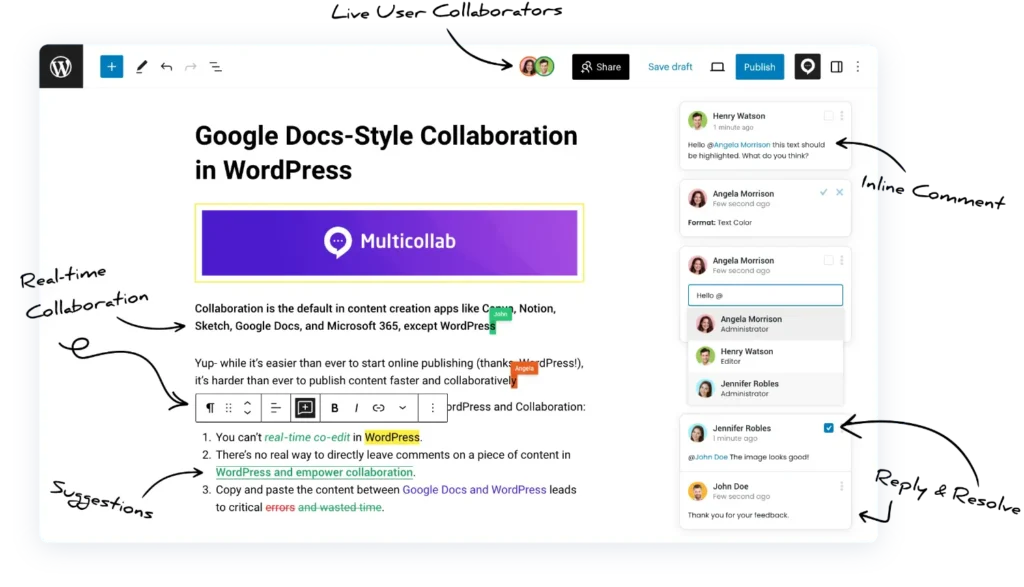
How it helps:
Multicollab brings the best parts of Google Docs into the WordPress editor. Writers and editors can collaborate on content without leaving the CMS.
Key features:
- Inline comments on any Gutenberg block
- Tagging teammates for review
- Suggested edits that don’t overwrite original text
- Built-in approval system inside the WordPress editor
- Activity logs for tracking changes and responses
It removes the need for external tools like Docs, Slack, or email chains for feedback, keeping all collaboration in one place. This saves time and reduces confusion.
For content planning and editorial workflow: PublishPress
Problem it solves:
Without a shared calendar or workflow, it’s hard to track who’s doing what, which content is ready, and what’s coming up next.
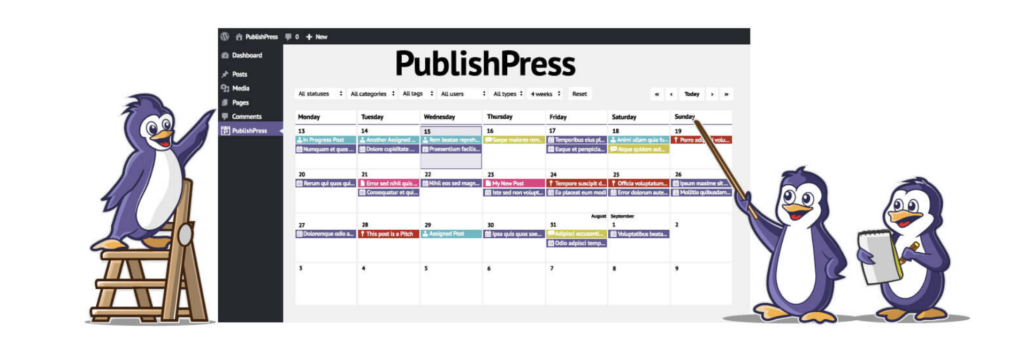
How it helps:
PublishPress adds an editorial calendar to WordPress and lets you define custom statuses for your content.
Key features:
- Visual editorial calendar
- Custom statuses (like “Needs SEO,” “Awaiting Image,” etc.)
- Role-based permissions for each team member
- Notifications when content changes status
- Content overview dashboards for editors and leads
Everyone knows what stage each piece is in and who’s responsible, reducing delays and missed deadlines.
For SEO optimization: Yoast SEO or Rank Math
Problem it solves:
SEO often becomes an afterthought. Teams forget meta descriptions, internal links, or keyword usage until it’s too late.

How it helps:
These plugins provide real-time SEO checks right inside the post editor, so writers and editors can optimize as they go.
Key features:
- SEO and readability analysis
- Keyword tracking and focus suggestions
- Internal linking suggestions
- Social preview snippets
- Schema and structured data settings
You don’t have to guess if a post is optimized. These tools guide your team to get the basics right before publishing.
For publishing automation: Uncanny Automator
Problem it solves:
High-volume publishing often means repetitive, manual tasks like notifying team members, tagging users, or syncing tools.

How it helps:
Uncanny Automator let you build automations that trigger when content reaches certain stages or actions are taken.
Key features:
- Automate notifications (e.g., “Slack the editor when a post is marked ‘Ready for Review’”)
- Connect WordPress with CRMs, email platforms, or project tools
- Auto-tag or segment users based on published content
- Trigger follow-up workflows after publishing (like email sequences or social shares)
Automation reduces human error and saves time, especially when you’re managing dozens of posts a month.
For reusable layouts and consistency: Kadence Blocks
Problem it solves:
Recreating the same layout every time wastes time and leads to inconsistencies in formatting or design.
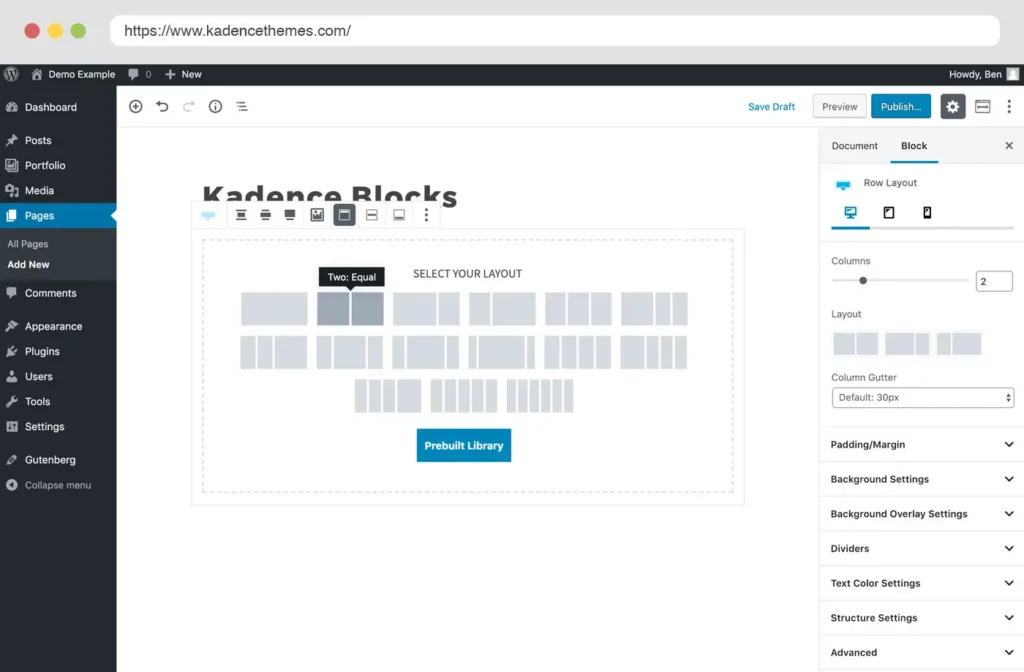
How it helps:
Kadence Blocks lets you create and save pre-built blocks or entire page layouts to reuse across posts.
Key features:
- Save commonly used sections like CTAs, FAQs, bios, or testimonials
- Maintain design consistency across writers and contributors
- Easy to insert and customize
- Works with most themes and page builders
It’s especially helpful for teams publishing similar formats at scale—like how-to articles, case studies, or product announcements.
Each of these tools plays a different role, but together, they help you build a complete publishing system inside WordPress that can scale with your team and keeps everyone aligned.
Strategic solutions to pain points
Problem 1: Content is scattered across multiple tools
What happens: Writers draft in Google Docs, feedback lives in Slack, and editors work inside WordPress. Nothing stays in sync.
Fix it with Multicollab:
Collaborate, comment, and suggest edits directly inside the WordPress editor. No more switching between tools or losing formatting in the copy-paste process.
Problem 2: Slow feedback loops and unclear approvals
What happens: Editors and stakeholders give feedback late or in different places. It’s hard to know what’s final or approved.
Fix it with Multicollab + status labels (like “Needs Review” or “Approved”)
Add inline comments, tag reviewers, and mark posts with clear statuses. Everyone knows where content stands at a glance.
Problem 3: Deadlines get missed and content slips through the cracks
What happens: Without a shared editorial calendar, it’s hard to track what’s scheduled or who’s behind.
Fix it with PublishPress:
Plan your entire publishing schedule inside WordPress. Assign posts, set due dates, and monitor progress with custom statuses and notifications.
Problem 4: Your team is stuck doing repetitive tasks
What happens: Formatting, adding links, scheduling, SEO checks—everything is done manually, every time.
Fix it with Gutenberg block patterns + Uncanny Automator:
Save reusable content blocks for CTAs, FAQs, or layouts. Then, use automation to handle routine tasks like notifying editors or sharing to Slack when content is updated.
Problem 5: Content goes live without proper SEO
What happens: Writers forget to add meta descriptions, keywords, or internal links until it’s too late.
Fix it with Yoast SEO or Rank Math
These plugins guide your team through optimization before hitting publish—so nothing slips through the cracks.
Problem 6: Your team doesn’t know how content performs
What happens: Writers and editors don’t see the traffic, engagement, or rankings of their work. No one learns from what works.
Fix it with performance reporting via Rank Math or Google Analytics integrations
Build a simple dashboard or send monthly content performance summaries. Even better, set KPIs for each content type and tie them into your workflow.
Problem 7: Onboarding new writers or freelancers takes too long
What happens: Every new contributor has to learn the publishing process from scratch.
Fix it with template workflows + documentation inside the CMS
Use plugins like PublishPress for repeatable steps and saved roles. Keep briefs, style guides, and process checklists available where writers are working.
Scaling digital publishing without losing quality
Scaling content doesn’t mean lowering your standards. Here’s how to maintain quality, even when you’re publishing at volume:
Document your workflow: Make your process repeatable—and easier to follow for new team members.
Use content templates: Create reusable layouts for blogs, updates, and guides to keep structure and design consistent.
Write and collaborate inside WordPress: Avoid formatting issues and version chaos by keeping all writing and feedback in one place.
Follow a pre-publish checklist: Standardize tasks like SEO, internal links, and image checks before publishing.
Automate repetitive tasks: Save time by automating handoffs, notifications, and post-publish actions.
Track content performance: Use analytics to learn what’s working and share those insights with your team.
Tying digital publishing to performance KPIs
Set KPIs for each content type: Define success based on content goals—traffic, engagement, leads, or SEO.
Track post-publish performance: Use tools like GA4 and Rank Math to monitor:
- Pageviews
- Time on page
- Click-through rate
- Conversions
- Keyword rankings
Share performance data with the content team: Help writers and editors learn from real results.
Run monthly content reviews: Identify what’s working and what’s not. Use this to shape future content.
Adjust workflow based on results: Let performance guide process changes, like improving SEO steps or updating templates.
What high-performing digital publishing teams do differently
They use fewer tools, not more
Instead of spreading work across Google Docs, Trello, Slack, and WordPress, they centralize content creation and collaboration in one place.
They collaborate inside the CMS
Feedback, edits, and approvals happen directly in WordPress, cutting down review time and confusion.
They build repeatable systems
Templates, checklists, and automation reduce rework and make quality easier to maintain at scale.
They track performance consistently
Every piece of content is tied to a goal. They review data regularly and share insights across the team.
They optimize their workflow, not just their content
They’re always improving how they publish, not just what they publish.
They train and onboard faster
Clear documentation and structured processes help new writers and freelancers ramp up quickly.
They value consistency over chaos
By sticking to process and simplifying tools, they reduce mistakes and publish with more confidence.
Conclusion: Digital publishing doesn’t have to be chaotic
Managing high-volume digital publishing in WordPress can feel overwhelming but it doesn’t have to be. With the right workflow, tools, and team habits, you can move from disorganized and reactive to structured and efficient.
- Start by keeping your process simple.
- Create content where you publish it.
- Use built-in collaboration tools.
- Automate what you can.
- And always keep your team connected to results.
Whether you’re publishing five posts a week or fifty, the key is building systems that scale with you.
And if you’re ready to bring collaboration directly into WordPress, without the copy-paste headaches, Multicollab can help you get there.


